As an important technology in the field of modern cosmetic dentistry, tooth laser whitening has been more and more accepted and recognized by consumers. It can not only help people quickly and effectively improve the brightness of the teeth, but also improve the overall beauty of the teeth to a certain extent. This article will introduce the related knowledge of laser teeth whitening in detail, including its principle, process, effect, safety, postoperative care and comparison with other whitening methods, aiming to provide readers with a comprehensive and in-depth understanding.
First, the basic principle of tooth laser whitening
Laser teeth whitening is a photochemical reaction based whitening technology, the principle of which is to apply bleaching drugs to clean and pre-treated teeth, and then use laser catalysis to decompose bleaching drugs, so that it produces free oxygen atoms. These highly active free oxygen atoms can penetrate deep into the teeth, combine with pigment molecules and release them extensively, thus achieving the purpose of removing pigment from the surface and deep layers of the teeth.
The laser whitening machine outputs a unique wavelength that selectively acts on pigment particles in the teeth. At the same time, bleaching drugs (usually hydrogen peroxide or its derivatives) catalyzed by a laser speed up the reaction with the pigment molecules, causing them to break down into small, colorless molecules that are excreted from the teeth. In addition, the penetration depth of the laser is relatively large, and it can continue to remove the pigment molecules in the deep tooth decay decomposition, thus playing a bleaching effect from the inside out.
Second, the process of teeth laser whitening detailed explanation
The process of laser teeth whitening usually involves the following steps:
Oral examination and communication: Before starting the whitening treatment, the dentist will first conduct a comprehensive examination of the patient’s mouth to ensure that there are no oral problems such as periodontal disease and dental caries. At the same time, the dentist will communicate with the patient to understand the patient’s expectations and whitening needs, and whether there is a history of allergies or special conditions.
Tooth cleaning and pretreatment: Before laser whitening, teeth need to be thoroughly cleaned to remove impurities such as plaque and dental stones on the surface of the teeth. In addition, it may also be necessary to conduct certain pre-treatment of the teeth, such as using polishing sand to simply treat the tooth surface to improve the contact area and effect of the whitening agent with the teeth.
Apply whitening agent: Mix hydrogen peroxide and whitening powder into a paste, and then evenly apply the adjusted whitening agent on the surface of a total of 16 or more teeth, with a thickness of about 2-3mm. During this process, the dentist will make sure that the whitening agent covers all the surfaces of the teeth that need to be whitened and that the whitening agent does not come into contact with soft tissues such as gums.
Laser irradiation: Adjust the laser instrument so that the light emitted is 90 degrees perpendicular to the tooth surface and as close to the opening as possible. Then press the Start button to begin the first course of laser irradiation. Usually, the duration of each session is about 8 minutes, and the machine will automatically stop when it is over. During this procedure, the patient may feel a slight warm sensation, but usually no pain or discomfort.
Repeated sessions: Depending on the patient’s teeth and whitening needs, multiple sessions of laser irradiation may be required. In general, two 8-minute sessions can see significant whitening results. But for optimal results, the dentist may recommend 3 or more sessions.
Post-whitening treatment: After whitening is completed, the dentist will carefully remove the whitening agent applied to the teeth and rinse the teeth and between the teeth with water. The dentist then compares the patient’s teeth to assess the whitening effect and photographs them for subsequent reference.
Third, the effect and advantages of teeth laser whitening
The effect of laser teeth whitening is usually very significant, and can increase the brightness of the teeth by 2-4 shades, or even more. Moreover, due to the large penetration depth of the laser, it can remove the deep pigment of the teeth, making the whitening effect more lasting and stable.
Compared with other whitening methods, laser teeth whitening has the following advantages:
Fast and effective: Laser whitening usually only takes a few sessions to see obvious results, and the whitening effect is durable and stable.
High safety: In the process of laser whitening, the laser instrument will strictly control the intensity and wavelength of the light emitted to ensure that it will not cause damage to the teeth and gums. At the same time, the whitening agent is also strictly screened and tested, and the safety is guaranteed.
High comfort: Patients usually do not feel pain or discomfort during the process of laser whitening. Moreover, because the treatment time is relatively short, patients can complete the entire whitening process in a short time without losing too much time.
Personalized customization: The dentist will develop a personalized whitening program according to the patient’s tooth condition and whitening needs. This ensures that the whitening results are more in line with the patient’s expectations and aesthetic standards.
Fourth, the safety assessment of teeth laser whitening
Although laser tooth whitening has a high guarantee in terms of safety, there are still certain risks and side effects. These risks and side effects may include:
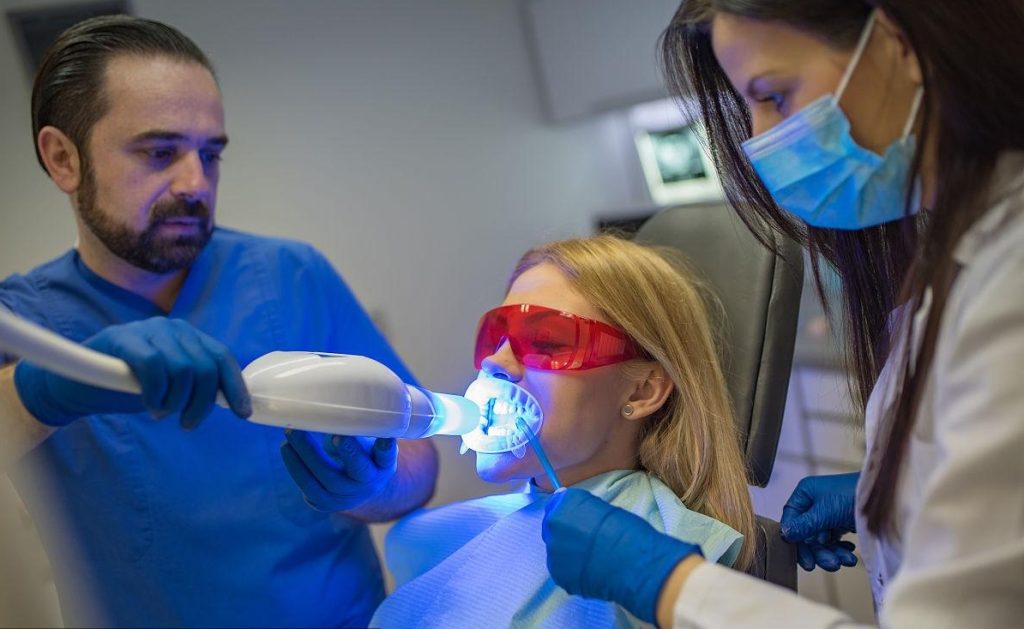
Sensitive teeth: During the whitening process, bleaching drugs may penetrate into the tiny cracks in the teeth, causing tooth sensitivity. This sensitivity usually resolves on its own within a few days, but some patients may take longer to recover.
Gum damage: If the whitening agent accidentally comes into contact with soft tissues such as gums, it may cause symptoms such as red, swollen gums and bleeding. Therefore, when performing laser whitening, the dentist needs to ensure that the whitening agent is only applied to the surface of the teeth and avoids contact with soft tissues such as gums.
Uneven pigmentation: If improper operation or improper postoperative care, it may lead to local skin irritation and increased secretion of melanocytes, leading to pigmentation. Uneven pigmentation may affect aesthetics, but it can usually be improved with medical treatment such as hydroquinone cream.
Secondary caries: After laser whitening, there may be tiny cracks or demineralization on the surface of the teeth, which are easy to breed bacteria and cause caries. Therefore, patients need regular oral examinations and cleaning maintenance after whitening to reduce potential risks.
In order to reduce the occurrence of these risks and side effects, patients need to choose a regular oral medical institution for laser whitening treatment, and strictly follow the doctor’s guidance and care requirements after surgery.
Care and precautions after laser whitening of teeth
Care after laser whitening of teeth is essential to maintain whitening results and oral health. Here are some things to look out for:
Avoid dark foods and drinks: Within 24 hours of whitening, teeth are prone to re-staining. Therefore, patients need to avoid drinking hot and cold drinks, eating irritating and dark foods, such as tea, coffee, cola, red wine, betel nut, spicy hot pot, etc. At the same time, it is also necessary to avoid smoking, so as not to stain the teeth of substances such as nicotine in tobacco.
Keep the mouth clean: After whitening, patients need to brush their teeth carefully every morning and evening, for no less than 3 minutes each time. At the same time, you should also insist on gargling after meals to reduce the residence time of food residues and bacteria in the mouth. This can effectively prevent the recurrence of tooth coloring and caries.
Attention to sensitive teeth: some patients will have sensitive teeth or toothache after whitening. This is a normal reaction and usually subsides within a few days. If the sensitive symptoms persist or worsen, the patient needs to consult the dentist in time and take appropriate treatment measures.
Regular review: After whitening, patients need regular oral examination and cleaning maintenance. The dentist will make a personalized review plan based on the patient’s oral condition and whitening results. Through regular review, potential problems can be detected and dealt with in time to ensure whitening results and oral health.
- Comparison between laser teeth whitening and other whitening methods
There are many ways to whiten teeth, in addition to laser whitening, there are cold light whitening, teeth veneer, ultrasonic teeth cleaning and other methods. Each of these methods has advantages and disadvantages and is suitable for different people and situations.
Cold light whitening: Cold light whitening is done by shining high intensity blue light on the teeth of the whitening agent, so that the whitening agent will dissolve the stain in a short time. Then, the dissolved pigment tissue is washed away by flushing, so that the teeth can achieve the effect of whitening. The results of cold light whitening are usually ideal, but it takes several treatments to achieve the best results. Compared with laser whitening, cold light whitening is relatively cheaper, but the treatment time may be longer.
Tooth veneer: Tooth veneer is a thin layer of porcelain or resin material pasted on the surface of the tooth, directly covering the original color of the tooth, to achieve rapid whitening. Tooth veneers can not only whiten teeth, but also improve the shape and alignment of teeth. However, the tooth veneer needs to remove part of the tooth surface, which has a certain damage to the tooth. In addition, dental veneers are relatively expensive and require regular maintenance and replacement.
Ultrasonic tooth cleaning: Ultrasonic tooth cleaning is the use of the powerful energy of ultrasound generated by light and heat, remove the dirt and plaque in the mouth and on the teeth. Ultrasonic cleaning of teeth can effectively prevent the damage of bacteria to teeth, so as to eliminate the occurrence of dental disease and maintain the health of periodontal tissue. However, ultrasonic teeth cleaning mainly focuses on the cleaning effect, and its whitening effect is relatively limited for the pigmentation and tooth discoloration problems that have been formed.
In summary, as a scientific, safe and effective whitening method, laser teeth whitening has significant advantages and wide application prospects. However, when choosing a whitening method, patients should make a comprehensive consideration according to their own teeth and whitening needs, and make a wise choice under the guidance of a doctor. At the same time, we should also pay attention to oral care and regular review after whitening to ensure the whitening effect and oral health.
Vii. Conclusion
Laser teeth whitening, as an important technology in the field of modern cosmetic dentistry, has brought good news to countless people who pursue a beautiful smile. Through scientific principles, fine operation and personalized customized solutions, teeth laser whitening can make people have whiter, healthier and more confident teeth. However, whitening is only part of oral health, we also need to pay attention to maintaining good oral hygiene habits and healthy lifestyle in daily life, in order to truly have a beautiful and healthy smile. Wish everyone can have their own perfect smile, let smile become the most beautiful scenery in our life!

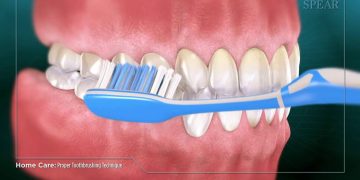
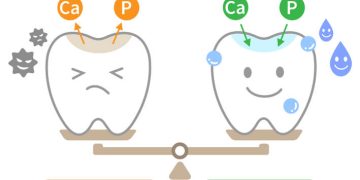
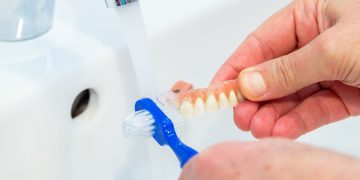




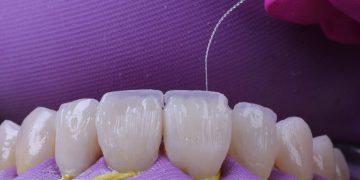
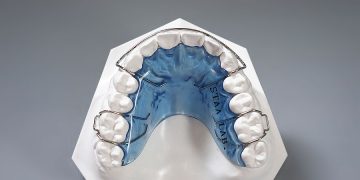
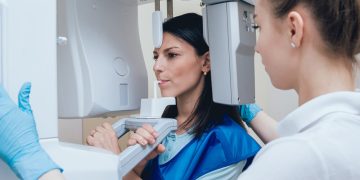
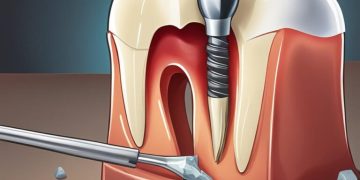
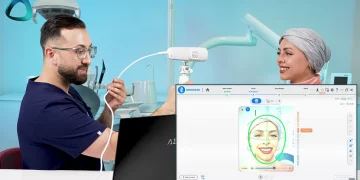


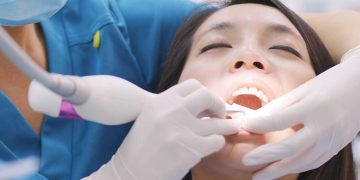

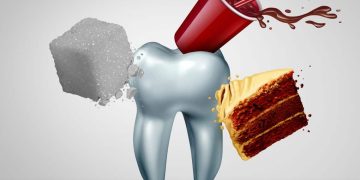







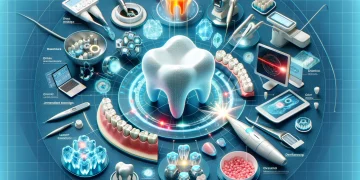





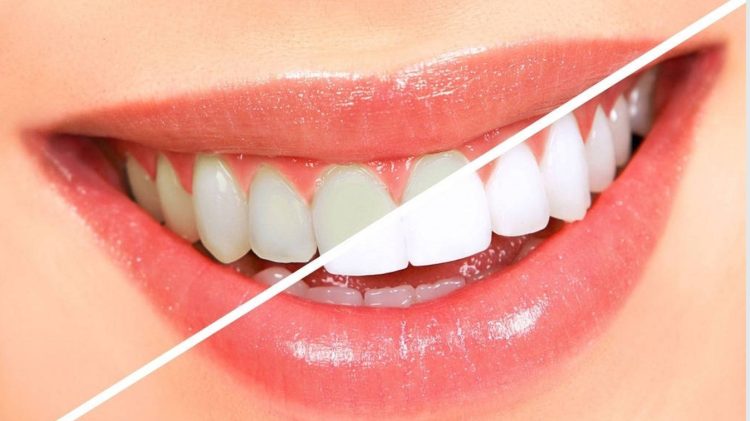













Discussion about this post